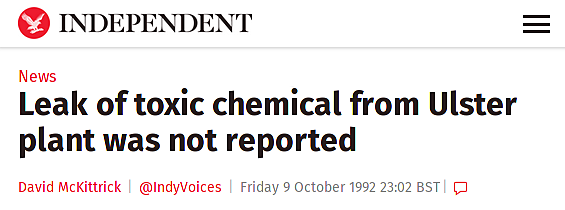The National Platform EU Research and Information Centre ( http://www.nationalplatform.org ) is a voluntary research and information body on EU affairs. Its Director is Anthony Coughlan, who is an economist and Senior Lecturer Emeritus in Social Policy, Trinity College Dublin.
He acts as coordinator of a loose group of lawyers, economists and politically interested people who come to the fore when their expertise is needed. The group seeks to produce legally accurate documentation on EU matters for the use of organisations and individuals on the centre, left and right of Irish politics who are concerned at the development of the EU in an undemocratic and highly centralised direction. Its members stand for a Europe of independent, democratic and cooperating Nation States.
Project Hope prevails over Project Fear in Brexit referendum
All Hail to those UK democrats who have made “Project Hope” prevail over “Project Fear” and decided that they want to win back Britain’s political independence and national democracy in face of the undemocratic monster that is the European Union.
Let us rejoice at the discomfiture of the Brussels Eurocrats and their acolytes in every EU country – in Ireland the likes of such anti-democratic, anti-national ideologues as Peter Sutherland, Alan Dukes, Brendan Halligan, Brigid Laffan et al, plus the clique of Eurofanatics that decides Irish Times editorial policy on the EU.
Democrats in the Republic of Ireland should now seek to win back Ireland’s independence by following Britain out of the EU and the Eurozone. Leaving the EU is the only legal way in which Ireland can disentangle itself from the disastrous Eurozone, joining which was the biggest mistake ever made by the Irish State.
Ireland does two-thirds of its foreign trade outside the nineteen-member Eurozone: two-thirds of its exports and three quarters of its imports. It is essential that Ireland has a special deal governing its UK trade, but while it stays in the EU it is Brussels Commission, not an independent Irish Government, that decides the Republic’s trade arrangements. In any case those running the present and all foreseeable Irish Governments share the anti-national and anti-democratic mind-set of the Eurocrats.
British Labour paid the penalty in yesterday’s referendum for failing to stand for British national independence and democracy. If the political Left does not stand for national independence, it is inevitable that the political Right will. This is a lesson that is universally applicable. It is what Ireland’s James Connolly taught in his writings and by example – the Labour leader who was one of the signatories of Ireland’s 1916 Easter Rising proclamation.
Ireland’s democrats who understand the EU issue will look today with contempt on those politicians in the Fine Gael, Fianna Fail, Labour and Sinn Fein parties who shamefully lent themselves to the campaign of bullying, lies and fear-mongering against ordinary UK citizens that characterized the “Remain” side in the Brexit referendum.
This world-historical act of rejection of the EU by the British people will encourage democrats in every EU country, whether on the political Right, Left or Centre, to push ahead with their struggle against the anti-democratic and reactionary EU/Eurzone and to seek to replace it with a Europe of independent, democratic and cooperating Nation States.
The EU is an out-of-date construct left over from the Cold War. It is inevitable that it will disappear in time, and the sooner that happens the better for national democracy, the true welfare of Europe’s peoples and peace and good international relations on our continent.
Best wishes from Ireland to all UK democrats as you seek to implement yesterday’s admirable decision in the period ahead.
Anthony Coughlan
Director
NB. Scottish talk of “independence in Europe” is a contradiction in terms. Scotland’s independence referendum last year was premised on a supposedly “independent” Scotland retaining the pound sterling as its currency. Do those who talk of Scotland remaining in the EU while the rest of the United Kingdom leaves, not realise that in order to do that Scotland would have to adopt the disastrous euro-currency and all the reactionary apparatus that goes with it?






